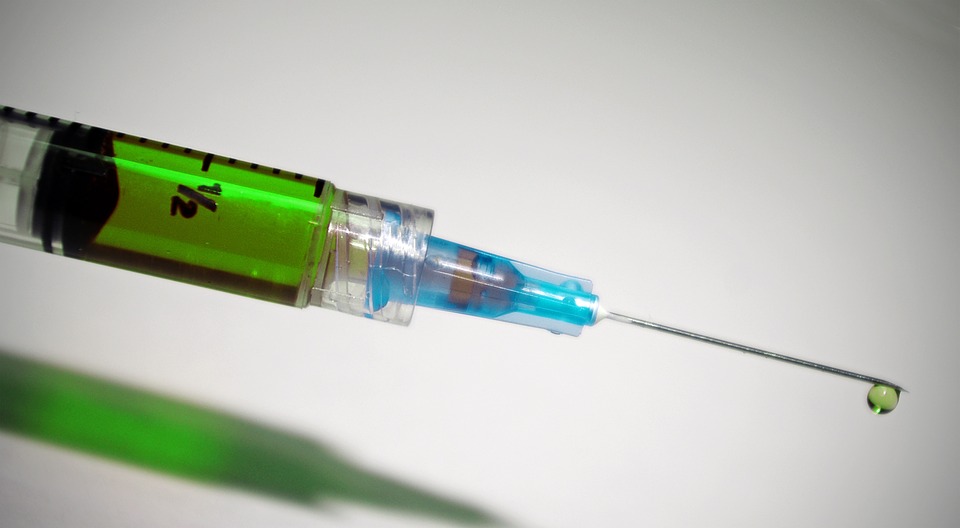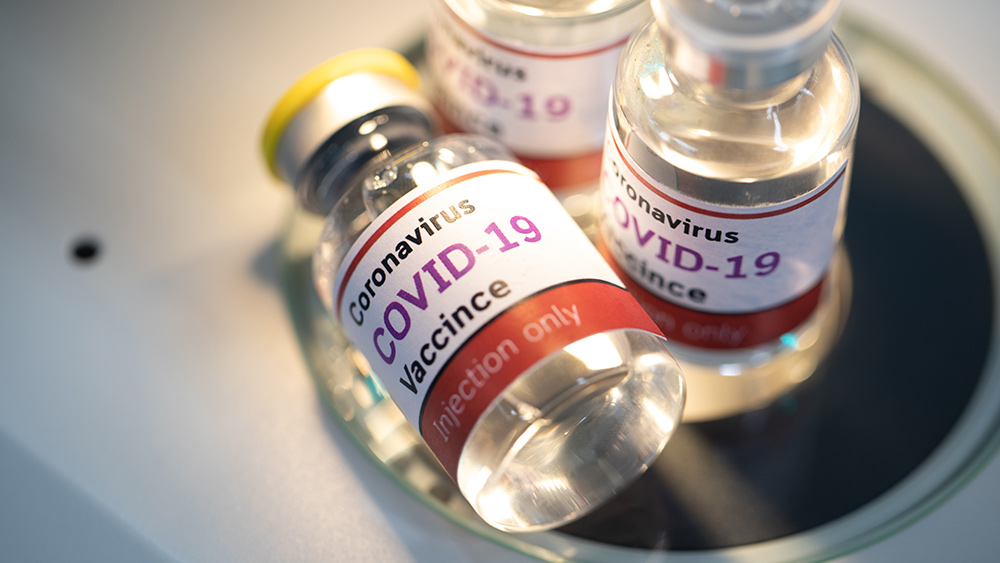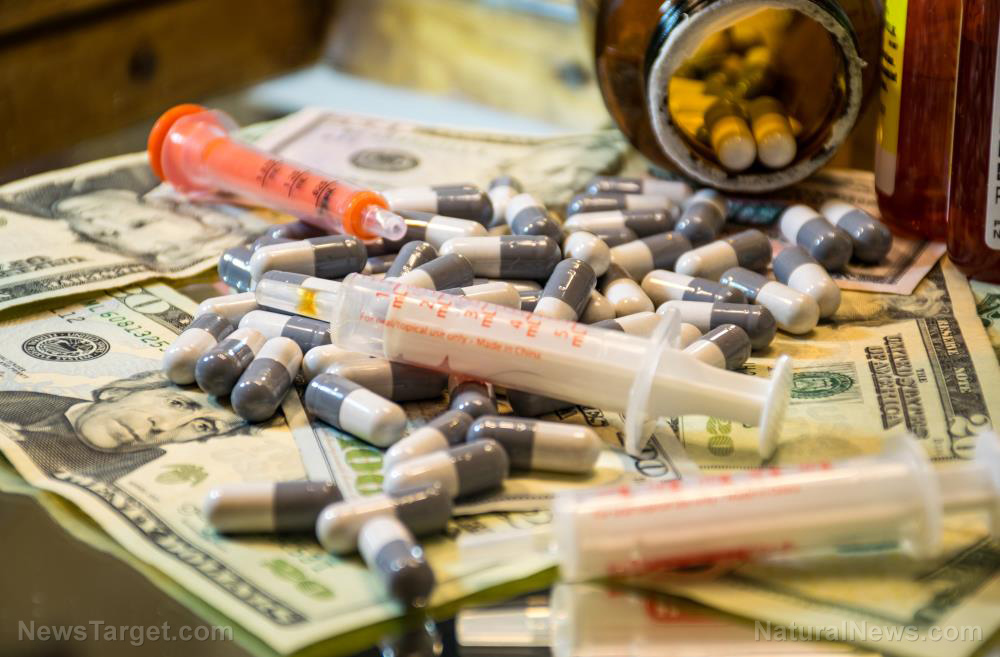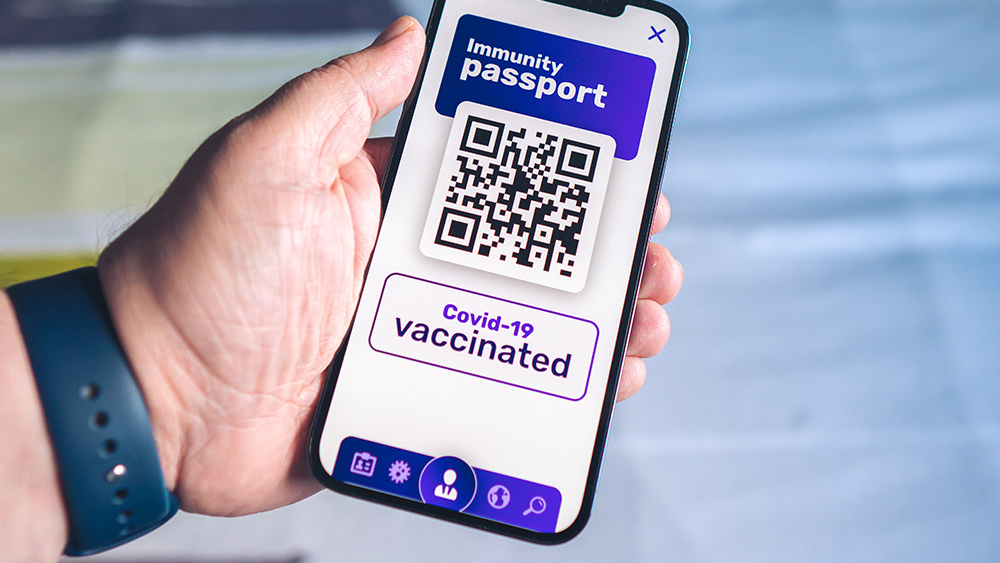Covid vaccine vial contents found to be highly toxic when spilled – imagine the damage caused when injected
02/01/2022 / By Ethan Huff

A few months back, workers transporting vials of a Wuhan coronavirus (Covid-19) “vaccine” drug called CoronaVac suffered serious injuries after a shipment was damaged and spilled.
A study on the incident, which took place in Thailand, found that health personnel exposed to the evaporated vial contents suffered ocular surface erosion and skin rashes.
“Proximity and timing suggest CoronaVac correlation with the ocular and skin reactions,” the paper’s authors wrote, adding that “we recommend caution during vaccine handling and fastidious clean-up of any spills.”
“Cautions should be taken to avoid broken vials, spills, and aerosolization of CoronaVac during the vaccination.”
Reading this, one would think that a highly corrosive industrial chemical of some kind was leaked, resulting in serious injuries. But these were supposedly “medicines” that were spilled – medicines that are being injected into people’s bodies.
If these drugs cause such health problems on the outside of the body upon exposure, what might they be doing to people’s insides, we wonder?
CoronaVac shots contain aluminum hydroxide
It turns out that CoronaVac injections are made in China and contain beta-propiolactone inactivated SARS-CoV-2 viral particles (or so they say, since SARS-CoV-2 has never actually been isolated).
The jabs have a claimed efficacy rate of just 50.4 percent, and that is the “official” number. In reality, it is likely closer to zero percent efficacy just like for the other injections from Pfizer-BioNTech and Moderna.
Concerning CoronaVac specifically, the study looked at a three-day jab campaign that took place at Rajavithi Hospital in Thailand. A total of 20 health personnel worked in the vaccination room of an indoor facility and all received the jab within the first two days.
On the third day, a single dose of the vaccine was accidentally dropped on the floor by a nurse, resulting in breakage. She promptly wiped it up with a piece of tissue paper and disposed of it in a trash can where it remained for the rest of the day.
That one broken vial caused 15 different personnel to experience skin rashes and ocular surface erosion anywhere from 3-17 hours after the accident. These same 15 people worked in the affected rooms for between 3-6 either during or after the incident occurred while another five who were also there showed no adverse reactions.
“All 15 personnel with ocular symptoms had some degree of conjunctivitis including: eye irritation (9); red eyes (7); tearing (7); and swollen eyelids (4),” reported the Daily Exposé.
“The nurse who accidentally dropped the vaccine vial and the assistant who wore contact lenses manifested the most severe and longest clinical manifestations, for 2 weeks.”
Interestingly, none of the 2,296 recipients of the injections reported any symptoms, at least not immediately.
“We hypothesise, after finding no other likely association, such as contamination of cleaning agents or malfunction of ventilation system, that the evaporated solution of the vaccine was associated with ocular surface erosions of the affected personnel,” the study authors wrote.
“… the excipients or aluminum hydroxide adjuvant may be the likely chemicals that associated with the adverse reactions.”
In the comments, someone wrote that a doctor who previously researched the contents of the vials, focusing primarily on the nanotech aspects, said before his death that the secret to finding out what is actually in them is to wait three days while it dries.
“And people are happy to be injected with this toxic fluid?” asked another. “Astounding.”
Over at Natural News, a commenter reiterated the fact that SARS-CoV-2 has never been isolated and that the media is just fabricating fear and terror over what amounts to a bad seasonal flu.
The latest news about Fauci Flu shots can be found at ChemicalViolence.com.
Sources for this article include:
Submit a correction >>
Tagged Under:
Big Pharma, CoronaVac, COVID, ingredients, pandemic, pharmaceutical fraud, poison, science deception, science fraud, Thailand, toxic chemicals, vaccine, vials
This article may contain statements that reflect the opinion of the author
RECENT NEWS & ARTICLES
PharmaceuticalFraud.com is a fact-based public education website published by Pharmaceutical Fraud Features, LLC.
All content copyright © 2018 by Pharmaceutical Fraud Features, LLC.
Contact Us with Tips or Corrections
All trademarks, registered trademarks and servicemarks mentioned on this site are the property of their respective owners.




















